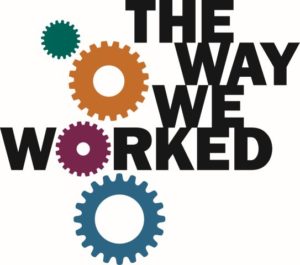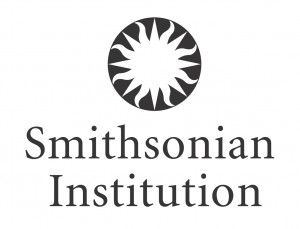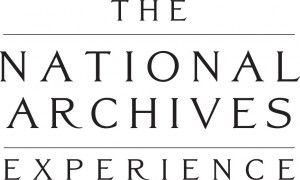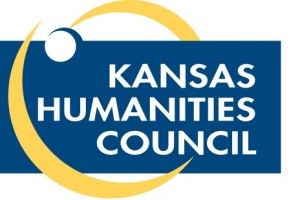 Hugoton: Gas Capital of the Southwest
Hugoton: Gas Capital of the Southwest
HUGOTON, KS – On December 21, 1929, Governor Clyde M. Reed lit a gas flame atop a forty-foot pipe on the Hugoton High School football field and officially proclaimed Hugoton as the Gas Capital of the Southwest. A few years earlier, the discovery of gas in southwest Kansas had brought unprecedented jobs and economic opportunity to the region. The stories of work and working in Kansas’ gas industry are on display in “Fueling the Way We Worked,” the Stevens County Library’s companion exhibition to “The Way We Worked” Smithsonian Institution traveling exhibition. Both exhibitions will be on display at the Stevens County Public Library, 500 S. Monroe Street in Hugoton, October 27 through December 9, 2012. The Stevens County Library is one of six hosts of the Smithsonian exhibition. The Kansas tour is presented by the Kansas Humanities Council.
In 1926, wildcatter Walter L. Sidwell discovered one of the nation’s largest gas fields while seeking oil in southwest Kansas. The discovery was made official in 1927 and that year, the “Hugoton Hermes” newspaper reported $100,000 in town improvements, including 15 new homes and a new newspaper building. Along with the newfound prosperity came job opportunities in the gas industry and with contractors who built sewer systems and disposal plants for the region’s growing cities. By 1930, oil and gas leases had resulted in $3.5 million for southwest Kansas counties.
“Walter Sidwell’s discovery of the Hugoton Field changed the way we worked in southwest Kansas,” observed Eunice Schroeder, Stevens County Library director. “We are pleased to share that history in “Fueling the Way We Work,” the companion exhibition to “The Way We Worked,” developed in partnership with the Stevens County Gas and Historical Museum.”
“The Way We Worked” explores the stories of America’s workers and invites visitors to consider how the workplace and workforce have changed over time and across generations. Through photographs from the National Archives, audio and video clips, and hands-on components, Kansans will discover how, together, our work makes America.
“The Way We Worked” tours six Kansas communities in 2012 and 2013. Other hosts include: Coronado Quivira Museum, Lyons; High Plains Museum, Goodland; National Orphan Train Complex, Concordia; Lumberyard Arts Center, Baldwin City; and Miners Hall Museum, Franklin.
“The Kansas Humanities Council sponsors the Kansas Tour of “The Way We Worked” in partnership with the Smithsonian Institution’s Museum on Main Street program. “The Kansas Humanities Council is pleased to be able to bring the cultural resources of the nation’s premier museum to Kansas communities,” said Julie Mulvihill, executive director of the Kansas Humanities Council. “The Stevens County Library was selected as one of the six hosts because of their compelling local “work stories” related to the gas industry and their innovative exhibition plans to use the Smithsonian exhibition as a springboard to explore, preserve, and share these stories in their community.”
Additional stories of work and working in southwest Kansas can be found in Elkhart and Liberal at two of the sixteen “The Way We Worked in Kansas” partner sites. The Morton County Historical Society, 370 E Hwy 56 in Elkhart, hosts “The Way We Worked in Morton County” exhibition October 27 through December 9, 2012. The exhibition explores the different types of work available in rural Morton County. The Seward County Community College Library, 1801 W Kansas Ave in Liberal, presents “The Way We Worked in Seward County,” October 27 through December 9, 2012. The library’s two exhibitions explore the history of labor in Liberal and Seward County.
“The Way We Worked” has been made possible in Kansas by the Kansas Humanities Council with support from the Friends of the Humanities, the State of Kansas, and the National Endowment for the Humanities. Additional support is provided by Douglas County Community Foundation, Jostens, the Ross & Marianna Beach Foundation, and the Western Kansas Community Foundation.
The Kansas Humanities Council is a nonprofit organization that supports community-based humanities programs, serves as a financial resource through an active grant-making program, and encourages Kansans to engage in the civic and cultural life of their communities.
For more information about “The Way We Worked” and related exhibits and events in Hugoton, contact the Stevens County Library at (620) 544-2301 or www.stevenscountylibrary.com or contact the Kansas Humanities Council at (785) 357-0359 or www.kansashumanities.org.
The Way We Worked has been made possible in Hugoton, Kansas at the Stevens County Library by the Kansas Humanities Council.
The Way We Worked, an exhibition created by the National Archives, is part of Museum on Main Street, a collaboration between the Smithsonian Institution and State Humanities Councils nationwide. Support for Museum on Main Street has been provided by the United States Congress.



